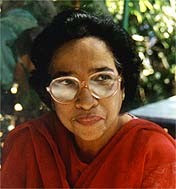 A holiday in Majorca,
the Isle of Love, is never complete without a visit to the Cartusian Monastery
at Valledemossa. A bus journey along the coast line from Playa de Palma to
Valldemossa is a thrilling experience which takes all of ninety minutes.
A holiday in Majorca,
the Isle of Love, is never complete without a visit to the Cartusian Monastery
at Valledemossa. A bus journey along the coast line from Playa de Palma to
Valldemossa is a thrilling experience which takes all of ninety minutes.
Cell No. 4 in the
monastery is the room where the famous writer George Sand wintered with her
lover the musical genius Frederick Chopin, between 1838 and 1839. It is a
modest room with essentials of furniture and his Pleyel Piano standing in one
corner. Chopin was already suffering from Tuberculosis and George nursed him
like a devoted mother. Chopin however, resented her oversolicitude. They
quarreled frequently, and in her story “Winter’s Tale,” published in 1841, she
was frank about their tempestuous life together. They parted company after
eight years of living together. Ironically it was her daughter who brought
about their rift.
 Baroness Aurore
Dudevant was a French novelist, who preferred to go by the name of George Sand.
She was born in Nohant in central Paris on 1st July 1804. She lost
her father at the age of four, and was brought up by a flighty mother. George
had a broad education and was familiar with the literary works of Shakespeare,
Rousseau, Homer and others.
Baroness Aurore
Dudevant was a French novelist, who preferred to go by the name of George Sand.
She was born in Nohant in central Paris on 1st July 1804. She lost
her father at the age of four, and was brought up by a flighty mother. George
had a broad education and was familiar with the literary works of Shakespeare,
Rousseau, Homer and others.
But George was unlucky
in love. Married at the age of 18 to Baron Cashmere Dudevant, she bore him two
children. She was a dutiful wife until she discovered he was an adulterer. She
left him in 1831, and moved to literary quarter of Paris, where she plunged
into a Bohemian lifestyle for the next five years. She took the name of George
Sand, dressed like a man, smoked, drank and rubbed shoulders with the literati
like Dumas, Balzac and Hugo and several other artists.
Like the heroine in her
third novel “Lelia” she was forever in search of an ideal man. She was
attracted to younger men like Jules Sandeau and Alfred de Musset who broke her
heart by being unfaithful to her, and the composer Chopin, who made the best of
her hospitality at Nohant, where he composed his haunting nocturnes, melodious
preludes and Sonata in B Flat minor.
George now realised that
she was wasting her time on men. She would rather shower her love on humanity.
Her writing became more humanitarian. She envisaged a classless society where
people would live together in love. She was back in her natal home at Nohant.
In her pastoral idylls like “The Haunted Pool” (1890) and “Francis the Waif,”
(1889) she advocated a return to the soil where one could find peace, virtue
and happiness.
At the outbreak of the
Revolution, George offered her services to the provisional government and wrote
many articles for the Bulletin of The Republic. But after the repression that
followed, she once again retired to Nohant.
Many of George’s books
dealt with women’s lives, loves, marriage and divorce. She stood for equality
of the sexes and property rights for women. During her lifetime, she wrote
hundred books and twenty five plays. She could cobble together 3000 words per
day and was said to complete a novel within a month. Her advocacy of Romantic Feminism
did not endear her to the conservative society of her day. But her books are
popular among analysts of Feminism even today. Her first book ‘Indiana’
published in 1832 was the story of a woman’s escape from a stifling marriage,
to live with the lover on a primitive island.
George Sand was truly a
woman with a prodigious pen. Though she was from an aristocratic family, she
was kind hearted and hospitable to all around her. She died at the age of 71
years at her home in Nohant, on June 8th 1876.






